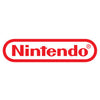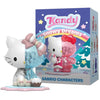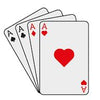Everything You Need to Know about Japanese Anime and Gaming Culture in 2024

Gif: @Direray
Dive into the bold world of Japanese anime and gaming culture, where creativity and innovation come to life. When modern anime began in the 1960's in Japan, it became exceedingly popular, leading to anime fans of all ages. Because of the large influence anime has had in Japan, it should come as no shock that you can visit statues, landmarks, and theme parks dedicated to anime culture and its creators.
Besides anime, Japan has managed to capture the attention of fans worldwide with its gaming offerings. From Dragon Ball to The Legend of Zelda, Japan has established itself as a top country in creating animated entertainment. Fans of Japanese anime culture and Japanese gaming will be ecstatic to include Sugoi Mart in their repertoire, as it's the ultimate location for stocking up on anime and gaming merch.
Below, we explore Japanese anime and gaming culture in detail, from its origins to popular conventions.
The Origins and Evolution of Japanese Anime Culture

A long history exists for Japanese anime culture, with its roots beginning in the early 1900s. At this time, artists were crafting and experimenting with various techniques already in place from animated shorts in France and America. Initially, Japan's anime industry revolved around PR and publicity. Unfortunately, due to issues such as natural disasters, shortages of resources, and war, anime culture in Japan had to begin again multiple times until the 1950s, when Tōei Animation was created. This animation studio took inspiration from the early Disney color movies and used the same method of production as Disney did to create animated films like Hakujaden.
This initial production company not only offered jobs during a time when they were scarce but also provided talented individuals, such as Takahata Isao and Miyazaki Hayao, a place to begin their careers in the industry. In the early 1960s, the first Japanese animated TV show (Tetsuwan Atomu) aired successfully, curating an anime boom of sorts. This TV show's success prompted new methods of storytelling and animated movements, streamlining Japanese animation processes.
However, Tōei Animation could not fully profit from the released animated series, leading them to offset costs by selling copyrights of their characters to companies like Meiji Seika. This led to a strong connection between animated Japanese shows and merchandise, which is still a popular business strategy for anime studios today. Unfortunately, other anime studios were also struggling to profit from this form of entertainment, leading to a recession for the industry.
Amidst the anime recession, the process behind the content shifted, with the idea that anime could appeal to a wider audience, not just children. This shift propelled anime popularity to millions of young adults after the release of Uchū senkan Yamato (TV series and film) in the 1970s. From there, the popularity of anime began spreading to other countries, including France and the US. While some countries rebelled against anime as a form of entertainment, many became fans of it, leading to an increase in fans. Since then, the industry has continued to grow worldwide, generating tens of billions of dollars in revenue annually. Anime remains the highest grossing Japanese films in the Japanese film market to this day.
The Impact of Anime on Japanese Pop Culture

Japanese anime culture has since expanded to other areas of Japanese society, superseding visual entertainment and falling into categories such as food, fashion, and music. It's even intertwined with other aspects of Japanese culture, from advertisements to Japanese convenience stores. From the characteristic childlike aspects of Japanese anime to its cute characters, it's common to see anime throughout daily life in the country.
Certain fashion brands use a cutesy aesthetic, just like what's seen in Japanese anime, to sell their products. Additionally, many brands include images of popular anime characters or designs inspired by characters to appeal to a larger audience. Anime is known for its vibrant hues and details, which can be seen in various aspects of Japanese art. As far as music, many JPop bands have assumed kawaii aesthetics (an aspect closely related to manga and anime).
Many Japanese series have managed to impact Japanese culture, even years later. Pokemon and Sailor Moon remain relevant in Japanese (and global) pop culture, with continued releases of products, art, clothes, and more featuring the beloved characters. These are only a few of the anime series that have greatly affected the people of Japan and the world.
The World of Japanese Gaming

Not only is Japan a leader in animated series, but it's also considered a top producer of video games. From Mario to Sonic the Hedgehog, Japanese gaming has managed to capture the hearts of worldwide fans of all ages. Japanese video games and the industry have been credited with innovative games, effects, storytelling, and other unique aspects, which have allowed the country to remain at the forefront of gaming.
With their creative gaming offers, Japan has managed to propel the video game industry into the future. For example, Nintendo (a Japanese company) collaborated with Niantic to produce Pokemon Go, an immersive game that took the world by storm. Though this was not the first game of its kind, it was the first that amassed a large number of followers and gamers worldwide.
Additionally, many gaming genres are available (and are popular) in Japan, such as role-playing (RPGs), action, and puzzle games. Each of these genres allows Japanese video game makers to curate exciting new offerings for citizens of the country and beyond.
Iconic Japanese Gaming Companies
For Japanese video games to remain a top contender in the industry, iconic gaming companies must produce these top hits. Some of the most well-known Japanese gaming companies include Nintendo, Sony, and Sega. These companies are behind iconic games such as Donkey Kong, Sonic the Hedgehog, The Legend of Zelda, God of War, and Gran Turismo.
These three companies have impacted the gaming industry immensely through the years. For example, in the late 1900s, Sega and Nintendo were in constant competition with each other. This "Console War" shifted the marketing and advertising techniques of video game companies, forever shaping the industry. Additionally, the creation of consoles such as PlayStation, Dreamcast, and Nintendo 64 allowed the companies to further expand their creativity and innovation, curating Japanese console games that were ahead of their time. PlayStation and Nintendo consoles remain popular, with new iterations released regularly.
The Magic of Japanese Arcade Games

One significant subgenre of Japanese gaming is arcade games, many of which have endured the test of time. Beginning in the late 1970s, Japan released Space Invaders, the first major Japanese arcade game that gained a global following. From there, Japan arcades continued expanding their offerings with the release of Pac-Man and other fan favorites like Street Fighter. Since then, additional types of games have become available at Japanese arcade centers, including a mixture of nostalgic favorites (like racing games) and newer entertainment options.
Japanese arcades are no longer filled with only video games; they also include crane games (aka UFO games), photo booths, and rhythm games. Though the number of arcades has decreased over the years due to the availability of home games, they remain a significant part of Japanese gaming culture.
Anime and Gaming Conventions in Japan

While many fans settle on simply viewing anime adaptations of manga or other anime films, others attend anime conventions to help bring their favorite characters to life. Since Japan is a major hub for anime, manga, and gaming, it's also one of the best locations for attending conventions related to these topics. Below are a few of the top anime and gaming conventions in Japan.
Comiket (コミックマーケット)
Japanese anime culture does not simply stop at dressing up as your favorite anime character. It also includes creating art, products, stories, and more inspired by anime characters and series. In the case of Comiket, this convention focuses on doujin, also known as self-published works by independent artists. These works range from manga to novels, with a mixture of amateurs and professionals as their creators. Comiket (also known as Comic Market) is the largest comic convention worldwide, making it a must-visit for anime and manga fans. It occurs in August and December each year in Tokyo.
Tokyo Game Show (TGS)
Each September, video game enthusiasts can explore the latest games before public release at the Tokyo Game Show (TGS). This convention is one of the largest worldwide and occurs each year in Chiba, Japan. TGS allows professionals and fans to learn more about and test out video and mobile games in a wide range of genres.
Tips for Attending Japanese Anime and Gaming Conventions
Here are a few tips to consider when planning a trip to one of Japan's many anime or gaming conventions.
-
Anime culture in Japan is beloved in Japan, so expect large crowds at conventions. Because of this, it's essential to properly plan your visit to a convention. Check out the schedule beforehand, and decide which events/booths are must-visits before attending.
-
While it may seem like common knowledge, staying hydrated while attending a convention is important. Because of the large amount of walking required, it can be easy to become dehydrated. Be sure to bring a reusable water bottle and consume water throughout the day.
-
Common Japanese phrases and words will make attending conventions easier. If possible, learn phrases like please, thank you, how are you, etc., before attending. This allows you to interact with other fans, celebrities, game makers, and more at conventions.
-
Always bring cash, as some smaller vendors do not take credit cards. This is especially necessary if you want to purchase food, merchandise, etc., while at the convention.
The Fusion of Anime and Gaming in Japan

Japan has also managed to seamlessly combine Japanese anime with Japanese gaming in multiple aspects. For one, they take inspiration from each other, with many games and series featuring similar aesthetics, fashion, and even storylines. Additionally, both anime and video games are a method for spreading Japanese culture across a wide, global audience as both have been known to include traditional foods, outfits, and more, depending on the game or series.
Besides their commonalities, multiple anime-inspired games and video game-inspired anime shows have appeared throughout the years. For example, Final Fantasy began as an RPG but has now been adapted into an anime TV series. Another example of this crossover is the Pokemon animated TV series, which was inspired by the video game of the same name.
The Global Influence of Japanese Anime and Gaming
Not only have these two major forms of entertainment (Japanese gaming and anime) managed to forge an astounding number of fans in Japan, but their global reach has also provided inspiration for many outside of the country. From artists of Western cartoons to artists in other mediums (including music and physical art), many have mentioned taking inspiration from various aspects of Japanese anime culture and gaming for use in their own pieces.
Not only have they taken inspiration, but many collaborations have occurred between Japanese anime and gaming companies and popular brands/companies outside of the country. For example, in the early 2000s, Takashi Murakami joined with Louis Vuitton to curate screen and mixed media art. These art pieces remain highly sought after, with most pieces garnering $5,000+ during sales.
In 2023, One Piece (a beloved anime and manga series) had an exciting collaboration with the LA Rams. During this collab, characters from the series appeared on signs, monitors, and special edition towels. As far as Japanese gaming collaborations, many have occurred over the years, such as the 2017 collaboration between Shu Uemura and Super Mario. This holiday collaboration featured makeup and hair products with images and designs inspired by the video game.
Popular Anime and Gaming Merchandise
Those interested in exclusive Japanese anime and Japanese gaming merchandise will find a plethora of products on Sugoi Mart, an online shop specializing in Japanese food, pantry items, household products, and more. Here are a few top picks for anime and gaming fans!
Ghibli Totoro Bag
Enjoy lunch in style with this kawaii Ghibli Totoro Bag, featuring a design inspired by the beloved Totoro from My Neighbor Totoro. This cute lunch bag is insulated, making it easy to keep snacks, drinks, and meals cold until you're ready to eat.
Sailor Moon Plushie Rabbit & Moon
There's no such thing as too many plush toys, and this Sailor Moon Plushie Rabbit & Moon bundle proves it! This super-cute bundle includes the iconic Sailor Moon Usagi (aka Rabbit) and her kitty Moon (aka Luna) snuggled up before bed. Both plushies are soft, squishy, and tucked into a soft blanket.
Pokemon Slowpoke Mug
Mornings are infinitely better with this fun Pokemon Slowpoke Mug. Featuring the calm, cool, collected Pokemon, this mug is perfect for days when it takes a few extra minutes to wake up. Enjoy tea, coffee, and more in this kawaii pink mug.
Super Mario Figure Collection: Peach
Super Mario is an iconic platform game beloved by many. This Super Mario Figure Collection of Peach allows you to bring a piece of the popular game home. With movable arms and head, you can use this figure as part of a display or for playtime with kids.
Conclusion
Japanese anime and gaming are never one-dimensional, as evidenced by their innovative storylines, exciting characters, and the constant need for both to push the boundaries of each industry. With the large array of genres available in each category, along with continued innovation, it's clear how Japan maintains its position as a leader in both industries. Not only do gaming and anime allow fans to immerse themselves in intricate worlds, but they also allow fans to learn more about Japanese culture simultaneously, providing insight into Japan's rich
Immerse yourself further in the world of Japanese anime culture by shopping for related merchandise. Sugoi Mart's extensive collection of anime and gaming merch will help bring a piece of Japanese pop culture to anyone's life. With a wide array of products, you'll easily find items that match your interests.
Want to stay updated on the latest anime and gaming products? Sign up for Sugoi Mart's newsletter for exclusive offers, news, and more!










































































Leave a comment